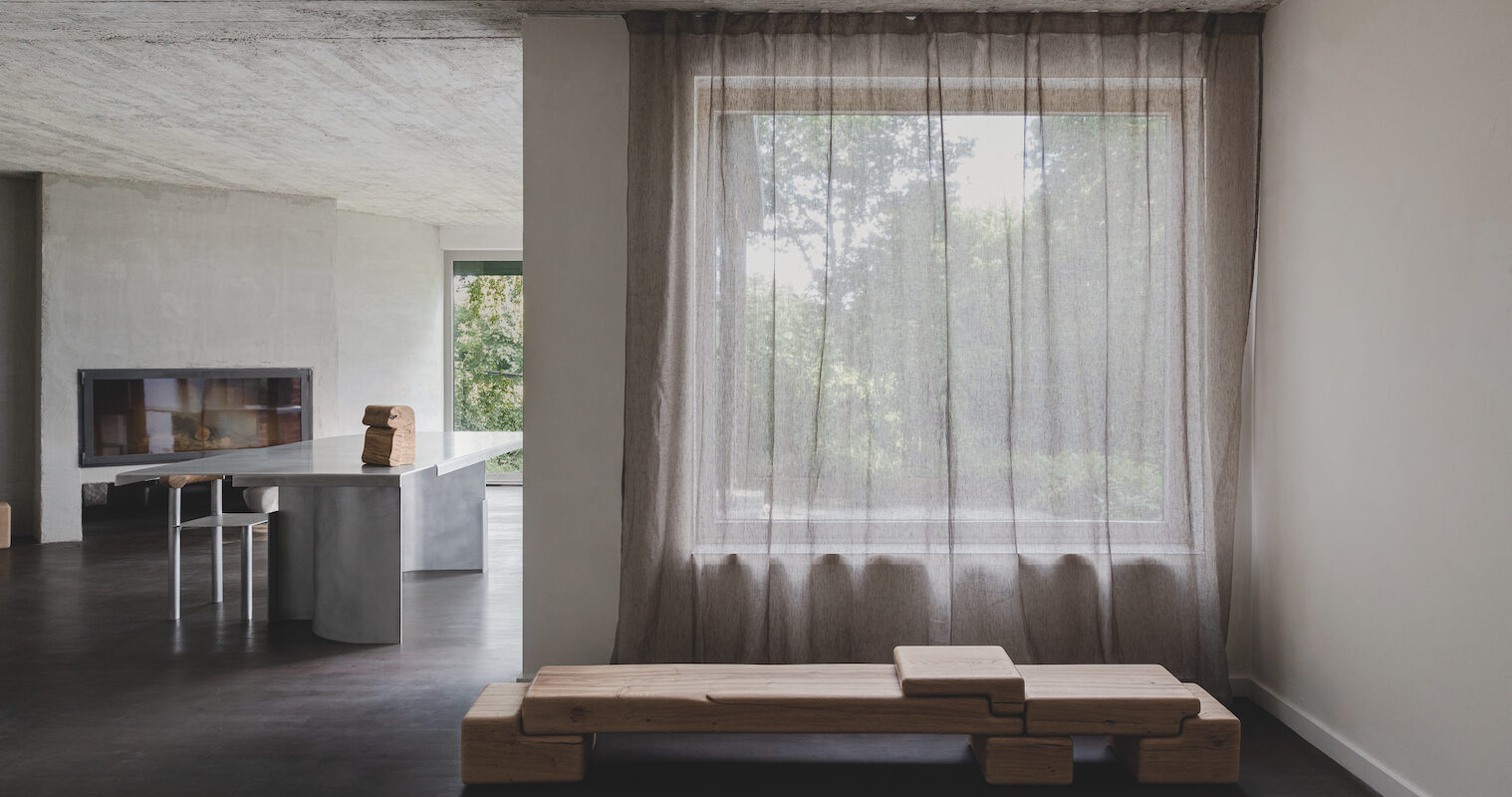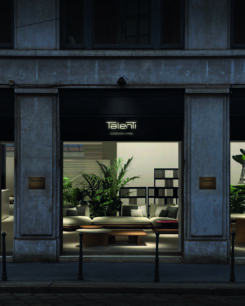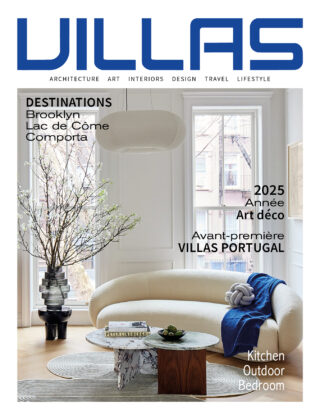Sommaire
Belgium is also the adoptive country of many designers from elsewhere, who find here the workshops they need to experiment, prototype and produce. At the crossroads of Europe, Belgium’s geographical location enables it to communicate with every country in the world. One example is the success of the Zaventem workshops, a creative incubator under the aegis of Lionel Jadot, which proposes a new economic model. This approach was recently implemented for the renovation of the Ancienne Royale Belge, which has been redubbed Le Mix, a unique venue that is reinventing the codes of the hotel industry. Designers working in Belgium are first and foremost makers and inventors, in love with materials. A description that certainly applies to Roxane Lahidji with her salt marble, Thibault Huguet and his vases from petrifying fountains or Vladimir Slavov and his bronze creations.
Muller Van Severen
Clear lines, furniture with an overtly sculptural feel and an unabashed palette of colours. Muller Van Severen are a husband and wife team with a shared passion who inspire us to think about how we want to live today.
When photographer Fien Muller first set her eyes on sculptor Hannes Van Severen in Antwerp, it was love at first sight. And reciprocal. Their meeting marked the start of a fruitful collaboration. It was a creative fusion! Like Ying and Yang, Bonnie and Clyde, Dupont and Dupond, Muller Van Severen work together, their hearts swaying between art, architecture and industrial design. The duo embark hand in hand on an inspiring quest for furnishing objects with distinct sculptural qualities, while also leaving their distinctive touch on the surrounding space. A brilliant combination of formal sobriety and a bold chromatic range, alternating the most noble with the most banal of industrial materials. This results in furniture and objects, often multi-functional, that seem to take shape almost intuitively, with no apparent effort, as if the designers were drawing in space with a simple stroke of a pencil.
It is hardly surprising therefore that Muller Van Severen have won numerous awards, collaborated with prestigious labels (Valerie_objects, Hay, Hermès, Kvadrat, KASSL Editions, Reform Copenhagen) and exhibited in reputed galleries (Galerie Kreo, Andreas Murkudis, Tim Van Laere Gallery) and museums (Vitra Design Museum, Centre Pompidou, Musée des Arts Décoratifs de Paris). They have also been invited to the Villa Cavrois (an architectural manifesto of the French modernist movement) for a masterly exhibition freely inspired by the work of its creator, Robert Mallet-Stevens. Their work is only logically therefore situated on the border between modernism and the most expressive avant-garde.
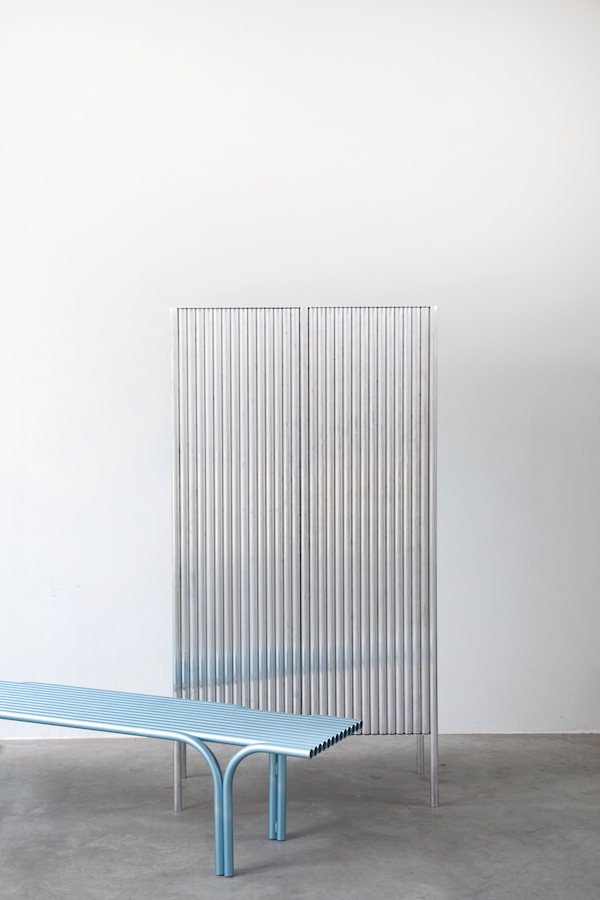
Alltubes cabinet
Xavier Lust
Xavier Lust’s latest works, in limited edition, enter into a dialogue with his earlier pieces. A shift towards works of art that is a logical evolution.
These extraordinary pieces of furniture are fashioned from mechanical and technological prowess. From bends to curves, from deformations to torsions, Xavier Lust takes a softly-softly approach to the material to ultimately tame it. Sheet metal remains his material of choice, while glass has given him a vast freedom of expression. Initially manufactured by the founding fathers of Italian design, such as MDF Italia, Driade, De Padova, Baleri and Fiam, since 2006 he has been developing pieces whose exceptional craftsmanship have earned them a place in art galleries. He entered the field of Collectible Design thanks to his iconic aluminium bench, which he perforated to protect it from the graffiti of the Brussels public space, and the collaboration of Carpenters Workshop Gallery. He now gives free rein to his ideas, drawing more inspiration than ever from the material and its manufacturing processes. He brings his creations to life by working directly with European craftsmen. Since 2017, the New York gallery Ralph Pucci has represented him internationally, both for one-off pieces and bespoke projects. His three new collections reveal a fascination with volumes, light and its multiple reflections, with a focus on current events and the growing climate crisis. Without waiting for the revolution in the world of furniture and object production, this eco-designer favoured recyclable and natural materials, and sculptural forms that defy fashion as far back as the 1990s. His sights are set on a forthcoming collaboration with Bugatti, a firm famed for producing exceptional and durable pieces.
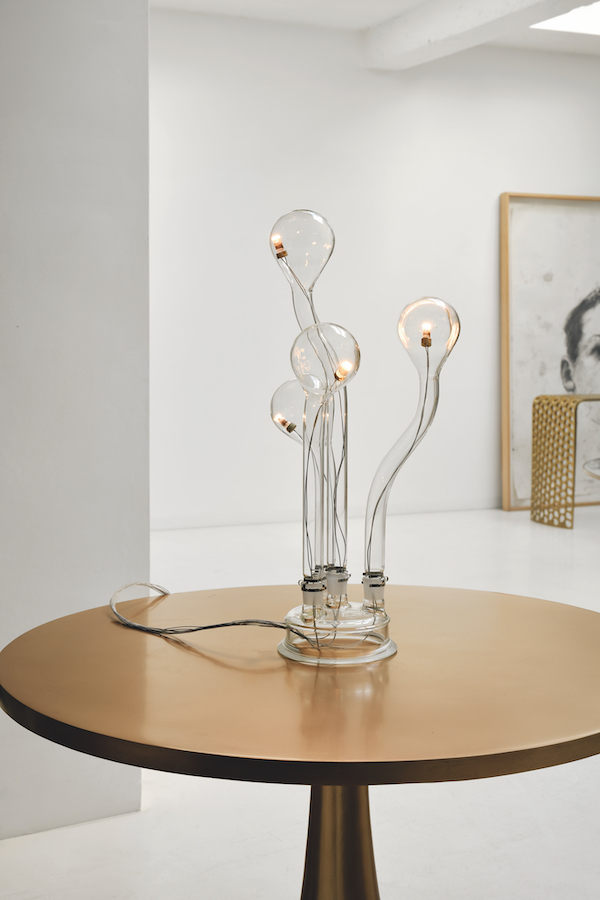
Experiment Lamps in Pyrex laboratory glass on a cast bronze Source table
Georges Pelletier
Fluency in the language of clay opens a new chapter in the world of art.
Georges Pelletier likes nothing better than plunging his hands into clay. The artist quickly found his feet and turned it into an art form. Belgian by birth, he spent his childhood in Fleurus and studied in Paris before working for Claude Pantzer. During this period, he also rubbed shoulders with Fernand Léger and Charlotte Perriand. He soon opened his own workshop, where he was spotted by Bobois, for whom he produced lamps. He was lured away by Cannes, where he became the world-renowned ceramist he is today.
The popularity of his unique pieces, which artfully combine beads, perforations, mirrors, rods and pellets, is off the scale, with signature objects such as his sun lamps and totem poles. His art is in the good hands of the next generation, his son Benjamin contributing his own skills to the many projects and exhibitions, while at the same time – for now – following in his father’s footsteps. Christophe Declercq, director of the Passé Simple gallery in Knokke, is their representative for Northern Europe.
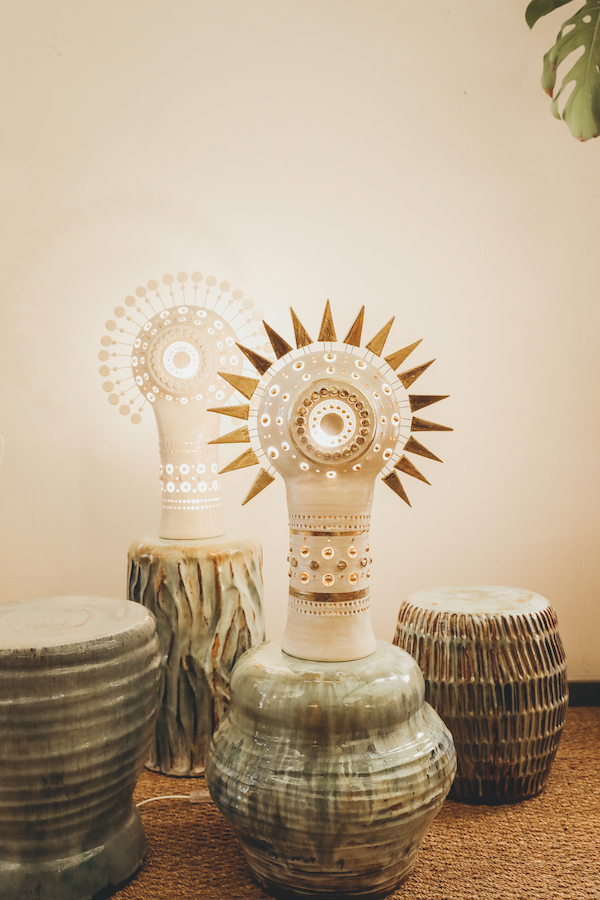
Sun lamp
Jules Wabbes
Jules Wabbes’ legacy includes some remarkable designs, both private and public, as well as furniture that is still in production today. A modernity that never ends.
He was fascinated by creations and materials capable of standing the test of time. The very expression of timeless design, combining beauty with functionality in a perfectly controlled spirit of sobriety.
Jules Wabbes (1919-1974) was an interior architect and designer, as well as a photographer, antique dealer and decorator. He had a knack for surrounding himself with the best craftsmen and a propensity to transgress the boundaries between classicism and modernity. In the 1950s and 1960s, he set up his own manufacturing and distribution company, Le Mobilier Universel. His tables, desks, bookcases and lighting in bronze, brass, steel and precious woods reflect a sense of balance, a hankering for comfort and a love of technical innovation. His work includes the International Science Pavilion at the World’s Fair in Brussels, the design of the US Embassy in The Hague (built by Marcel Breuer), the Résidence Palace in Brussels, Glaverbel’s headquarters in La Hulpe, the Drugstore Louise and the interior layout of Sabena’s aircraft cabins. His work takes us back to the very birth of industrial design, to a time when it was still at the service of the individual and not the designer himself. The result is furniture of implacable sculptural beauty that manages to achieve a sense of universality. Enough to inspire Caroline and Vincent Colet to resurrect Général Decoration (founded by Wabbes in 1969), which is reissuing limited editions of certain pieces of his furniture that will never fall out of fashion, committed to the same “made in Belgium” standards of excellence that drove the company’s founder.
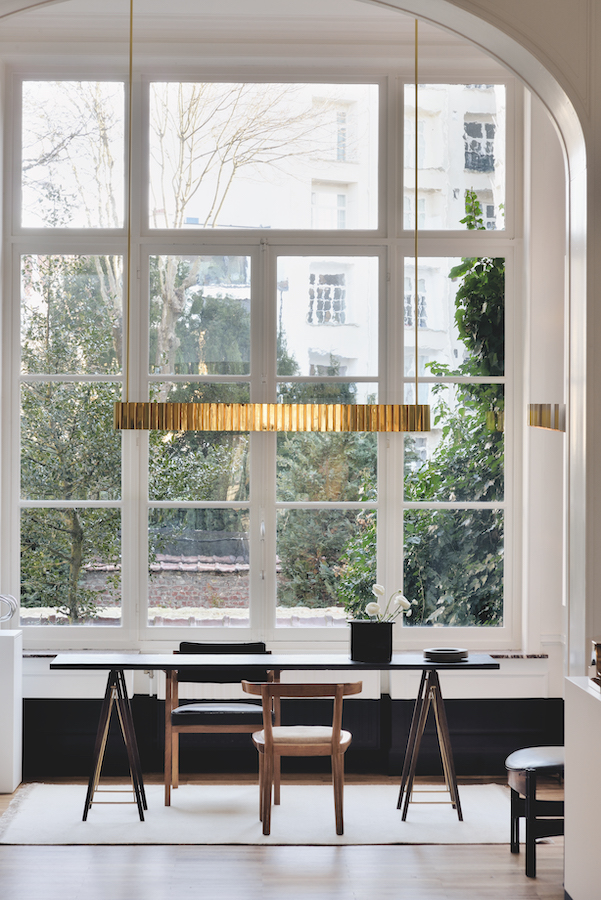
DR
Christophe Gevers
Design Museum Brussels pays tribute to the extraordinary talent of Christophe Gevers.
Until March 2024, the museum allows us to (re) discover the universe of one of the leading figures from the world of Belgian design and architecture in the second half of the 20th century. With exceptional brio, driven by the ambition of putting the human back at the centre of built spaces, Christophe Gevers (1928-2007) knew how to bring out the best in raw materials that become more beautiful over time. Interested in the present, the future and the “longgone past”, he was not only a draughtsman and an engineer but also a carpenter and a mechanic. As a self-taught craftsman, his drawings, plans, sketches and mock-ups were working tools that helped him to better visualize the project, clarify its functioning and its mechanisms, and convey the designer’s intentions. His work includes the TBA chair designed for the Taverne des Beaux-Arts (1959) and the CG01 lamp for the Cap d’Argent restaurant (1968). And did you know that he designed the fittings for the first Quick at Porte de Namur in 1984? More on the work of this “unclassifiable man” can be found in the brand-new book with text and photos by Jean-Pierre Gabriel.
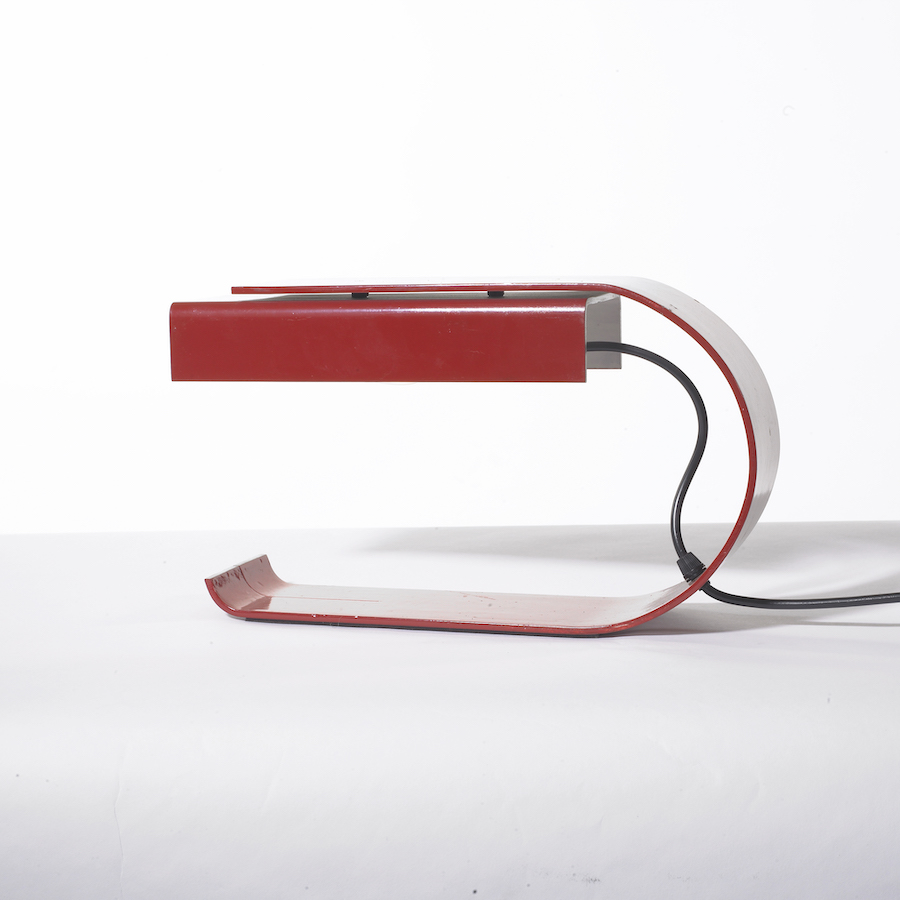
CG01 lamp
Thibault Huguet
A fervent advocate of authentic techniques and materials, Thibault Huguet is sketching out the future of design, with hand-crafted, pared-down pieces.
Born in France, in the Massif Central region, after graduating from the Ecole Supérieure d’Art et de Design in Saint-Etienne, Thibault Huguet joined various design agencies before setting up his own studio in 2020. Now based in Brussels, he continues to work with major luxury brands such as Cartier and Paco Rabanne, while indulging his personal fascination with ancient crafts and industrial processes. This passion comes through in the Luxus Naturae vase in Auvergne limestone, formed from the run-off of water from the Fontaines Pétrifiantes of Saint-Nectaire in Auvergne. Reminiscent of a sculpture by Maum Gabo, the design of the Zeppelin bench revolves around an assembly technique involving planes arranged perpendicularly, only just skimming over each other and appearing to be held together by levitation.
The Equarri bench puts the spotlight on the squaring technique used by carpenters, which consists of transforming a round log of wood into a square beam. The brutality of the process is reflected in the imprint left by the tool, contrasting with the finesse of the carved parts. The base of Lamp 1 uses standard U-shaped and L-shaped angles and the bottom of a fire extinguisher tank. Thibault’s work explores the idea of the economy of means and resources. Together with designers Jean-Baptiste Anotin and Helder Barbosa, he has formed the Meet-Met-Met collective, bringing together international designers to reflect on an offbeat theme and a subversive object. During this year’s Paris Design Week, the ashtray was showcased in a series of twenty creations that revisited its classic shapes and uses.
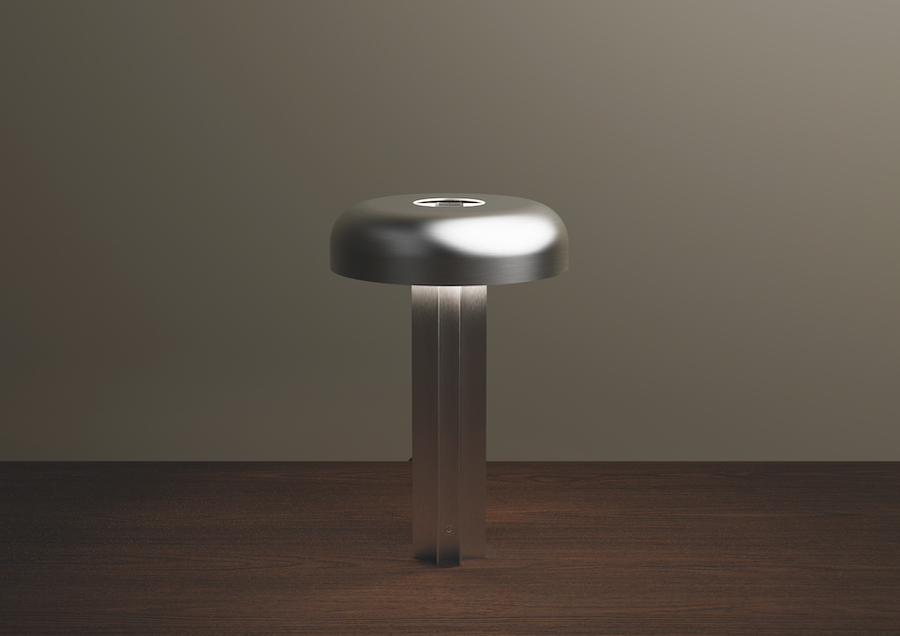
Thibault Huguet Design Studio
Roxane Lahidji
With her marbled salts concept, Roxane Lahidji has conquered the hearts of belgium and galleries the world over. A deep dive into the magic of the material!
After studying at the Design Academy in Eindhoven and training at the Haute École des Arts du Rhin in Strasbourg, this graphic design and illustration enthusiast found her own personal style by developing her own material. With her moulded, pressed, pigment-tinted and varnished salt concrete, Roxane can produce pieces up to three metres long.
Her creations are made using 90% bagged salt, a plentiful and very cheap material, and 5% Dammar gum, a transparent resin derived from pine trees that protects the material against humidity. Combining low-tech methods and traditional techniques, the process is a crossover of different disciplines, inspired by the Italian technique of scagliola, a marble stucco made from plaster, resin and rabbit skin glue. The pieces are polished by hand to achieve a beautiful glossy finish. Taking her experiments on a variety of different directions, she is working on projects with designers such as Clémentine Le Guérec, the Italian architects LitStudio and the art embroiderer Aurélie Lanoiselée, developing a technique that combines optical fibres and salt crystals to form a spider-like luminary. Her current creations mark a shift away from black and white to take on shades of grey and explore gestural abstraction with a marked wash drawing, a strong gesture in the form of a brushstroke, or to reveal a mineral, granite-like effect. Her marbled salts are married with stainless steel and rubber, tinged with pink and blue like the aurora borealis, and the ochre shades of onyx. The durability of her creations has won over the new Augusta gallery in Brussels.
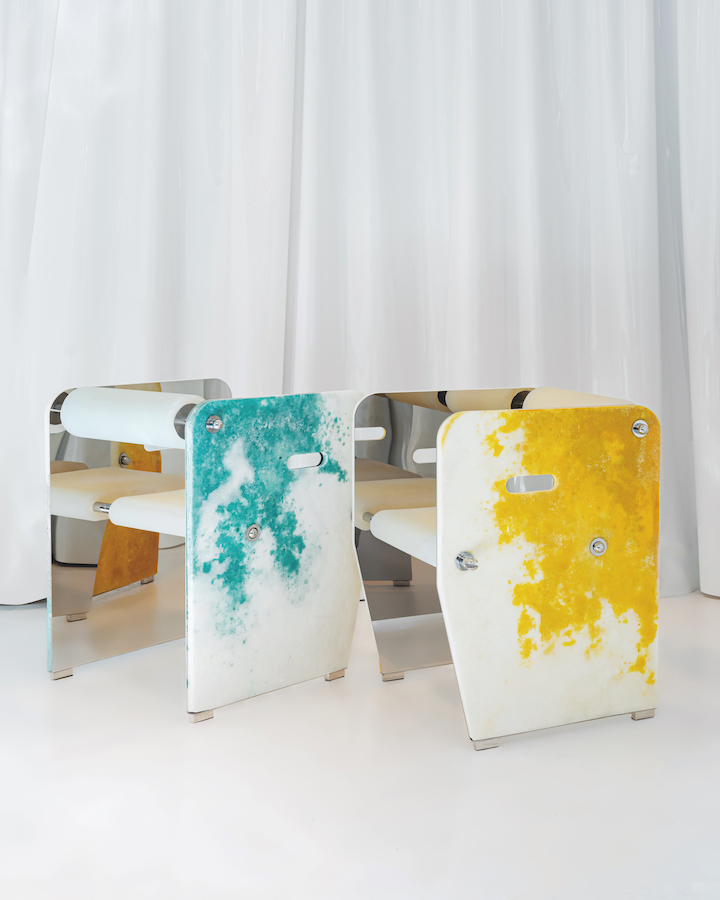
Explorations Chairs with LitStudio.
Linde Freya Tangelder
Craftsmanship and tactility play a key role in the poetic, finely wrought creations by Linde Freya Tangelder. In doing so, she seeks to stimulate our senses.
Over the past decade, Linde Freya Tangelder has worked her way to the international top of the design world with her studio Destroyers/Builders. Having previously launched her own furniture and lighting collection at Cassina, she designed her version of Dior’s iconic Medaillon chair in 2021. The industrial design pieces from that series are an extension of the unique objects she created for Carwan Gallery and Valerie Traan Gallery. Her inspiration comes mainly from architecture: its materials and techniques. As the name of her studio suggests, Tangelder deconstructs architectural elements, permuting them into smaller dimensions.
This creates an abstract composition that foregrounds other qualities of form. In her work, Tangelder’s initial engagement is with conceptual ideas and secondarily with functionality. Her most recent collections arise from architecture with organically shaped blocks, similar to those found in Italian cities and also in the Belgian Ardennes. The Brussels-based designer has iterated these blocks and their rounded forms into stools, side tables and lighting solutions, to name just a few items. In her designs, Tangelder seeks to reintegrate the human hand in the production process and bring opulence to the objects that surround us every day. She treats all materials equally, be they industrial, humble or noble. Craftsmanship and tactility are key to her poetic, finely wrought creations. Tangelder’s aim is to stimulate the senses and encourage users to create their own story with the objects.
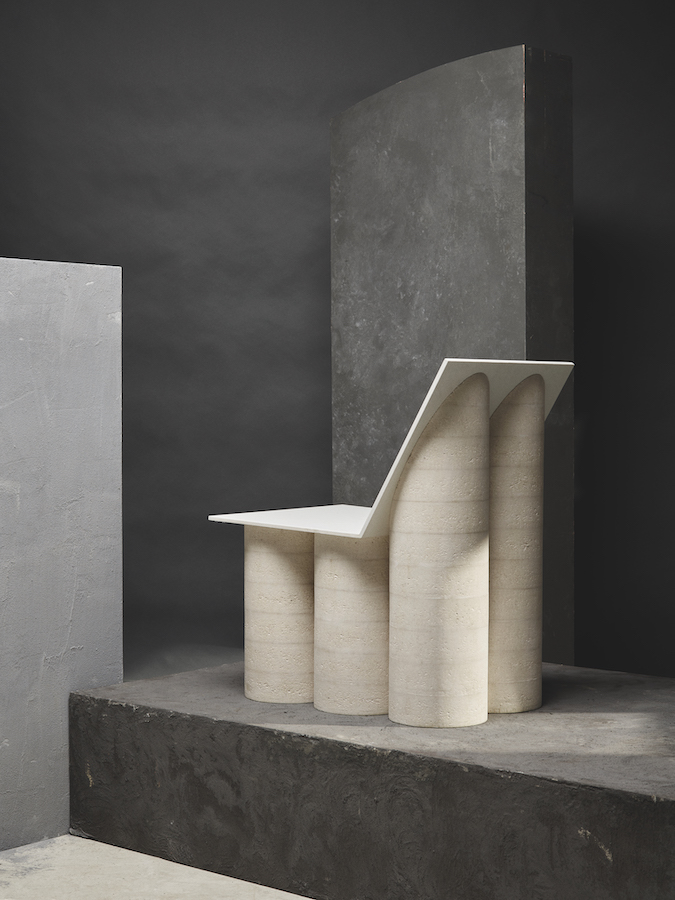
BOLDER CHAIR | Alexander Popelier
Koen Van Guijze
His creations are industrial jewels. His lighting… playful or brutalist.
He began designing his first lighting systems in 1990. Together with architects Nathalie Deboel and Niels Maier, his studio, Accessori Lighting Antwerp, develops made-to-measure projects, while his Sofisticato line, manufactured since 2018 by Serax, expresses functional ideas based on spatial figures. In 2002, Koen Van Guijze launched his own creations as one-off pieces and limited editions. Hovering somewhere between art and design, his lights are made from salvaged materials or marble scraps. Not that you would know, as he restores the materials’ nobility, and sublimates them with the art of a goldsmith. This year, at Collectible, he unveiled the B**ps wall lamp, made up of two welded disks in brass with a bronze patina, the Spine modular shelves in polished or brushed aluminium, and the Stool occasional table in glass and raw brass. On the practical side, these creations are also easy to dismantle and transport!
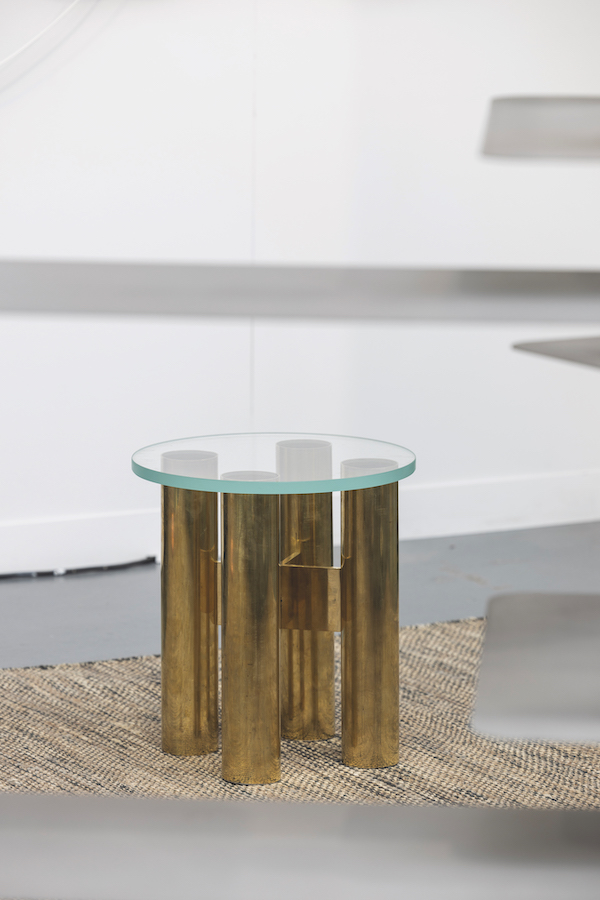
Stool occasional table
Vladimir Slavov
Vladimir Slavov conquers the world with his monumental, sculptural lighting.
Vladimir Slavov started his career as a theatre stage designer in Bulgaria. After completing his visual arts studies at the Academy in Antwerp in 2013, he began designing monumental lighting.
From his studio in Zaventem Ateliers, he has since worked on prestigious projects for Michelin-starred restaurants including The Jane in Antwerp and Mirazur in Menton, France. Slavlov is not afraid to experiment in his search for the interaction between light and form and the impact they have on their surroundings. From a thorough savoir-faire and exceptional attention to detail and finish, his preference is to innovate with classic materials, such as bronze. The designer has developed a new, expressive language of forms by melting bronze so it can form itself freely. And with his experience in the theatre, he knows perfectly well how his sculptural luminaires will function in space.
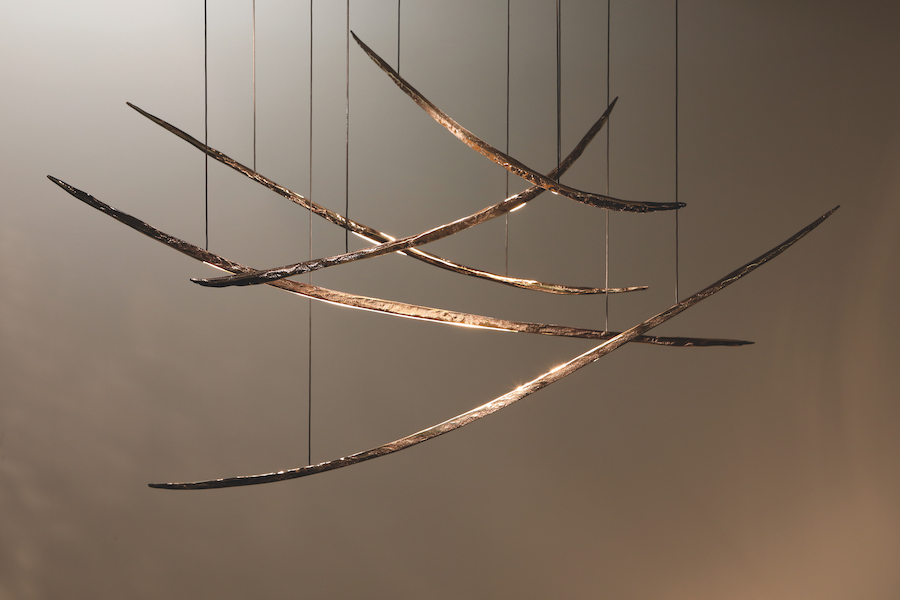
Ties Bemelemans | Katanas
